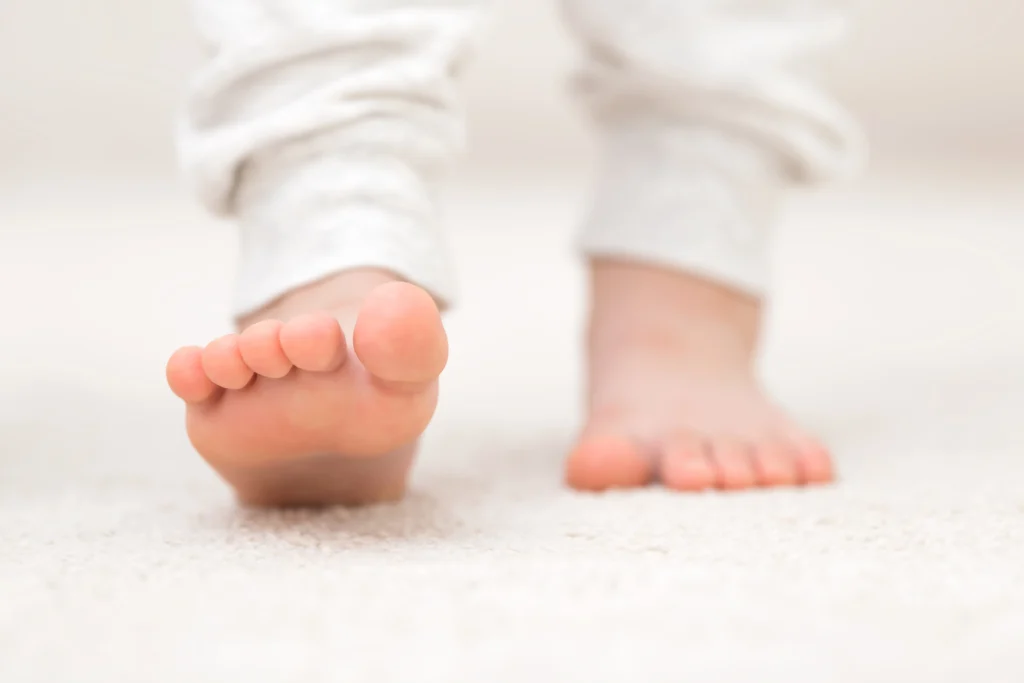What is In-toeing?
In-toeing (pigeon-toed) is a condition where your child’s feet turn toward each other when they are walking. When younger, if your child in-toes, they may trip over his/her feet at times. You may notice your child doing this more often when he/she is tired. Some children that in-toe tend to sit in a “W” position on the floor.
Who Does In-toeing Effect?
About 20% of people in-toe. Some of this is due to the curled position of your baby in the womb. Children can also inherit the tendency to in-toe from their parents. The clinician may ask you if anyone in your family used to do this as a child.
Symptoms of In-toeing
In-toeing does not cause your child any pain. It will not cause any permanent damage, such as arthritis or disfigurement. The tripping will continue to improve as your child grows and gets stronger, and the bones partially straighten themselves out. Surgery is rarely needed. Surgery would only be considered if the in-toeing was very severe and interfering with normal walking after 10 years of age.
In-toeing may originate from multiple locations in the lower extremities and may be due to one or more of the following:
- Metatarsus adductus is a condition of the foot that causes it to “hook” inward. The cause is unknown but may be related to the position of the baby in the womb.
- Tibial torsion is the turning inward of the tibia (shin bone). This is also related to the position of the baby in the womb but also seems to run in families.
- Femoral anteversion is the turning inward of the child’s femur (thigh bone). The exact cause is unknown; it seems to run in families.
Treating In-toeing
Nothing needs to be done about in-toeing. In the past, children who in-toed were treated with casts, orthotics, physical therapy, or special braces. After many years of research, there is no evidence that any of these will help speed up nature’s progress. The natural growth of the femur and tibia will cause them to straighten out as your child grows. Since some adults are still in-toe, and this is an inherited condition, it is possible that your child may still have some mild in-toeing when he or she is older.
Pearls
- If the foot is flexible, the metatarsus adductus will typically resolve by itself within 69 months. If it does not improve or is a severe case, special braces, shoes or surgery may be recommended.
- The tibial torsion typically improves over the first 4-6 years of life but will continue to improve until about age 10. The in-toeing in tibial torsion is most noticeable, and the tripping is at its worst, between ages 2 and 4.
- The femur continues to improve until about age 810. Children with femoral anteversion like to sit in the “W” position. This is NOT harmful; it is simply the position in which the hips feel most comfortable.
When To See The Pediatric Orthopedic Center
If you feel your child is experiencing symptoms or signs related to this condition, it may be time to visit us. The Pediatric Orthopedic Center is the premier NJ hub for pediatric orthopedics, with three offices throughout northern NJ. Having been the leader in pediatric orthopedics in this area for over 25 years, we are the largest and most award-winning pediatric orthopedic practice in the tri-state area.



